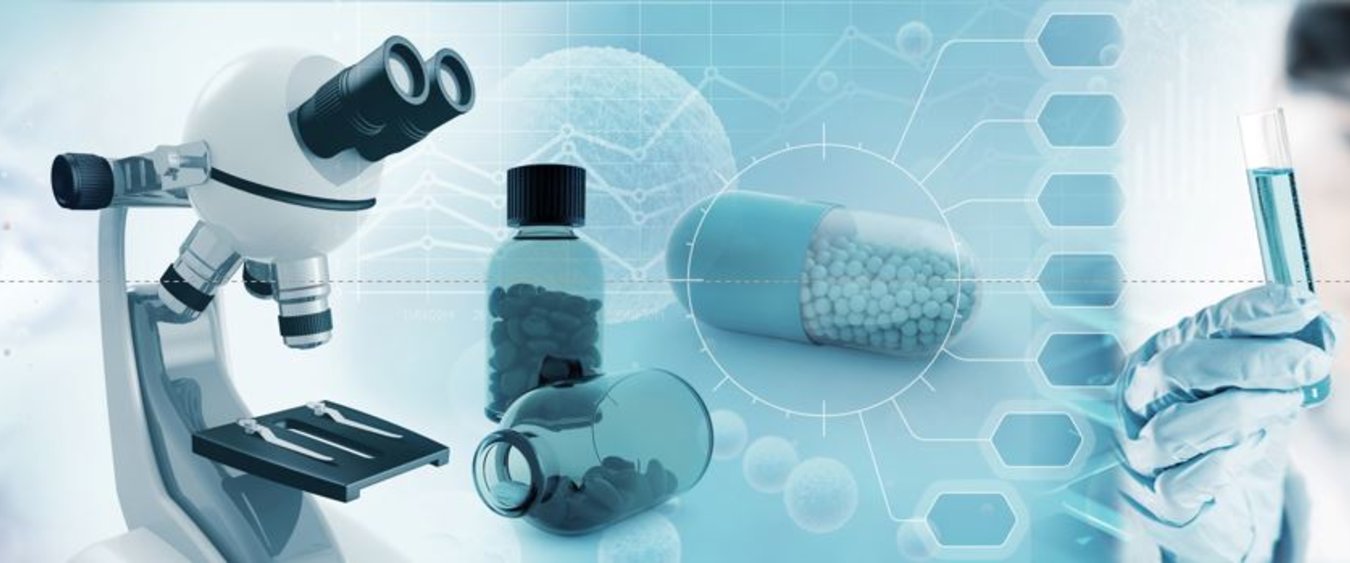What is gelatin?
Gelatin is a protein derived from animal raw materials. It is obtained by partial hydrolysis of collagen, the most abundant protein in the animal world, with high concentrations present in connective tissues. It consists of eighteen amino acids, eight of which are considered essential. As a polydisperse polymer, gelatin exhibits many useful properties and functions that lend themselves to pharmaceutical and medical applications.
Properties
- Safe
- Soluble
- Thermoreversible
- Digestible
- Biocompatible
- Odorless / flavorless
- Low allergenic potential...
Functions
- Water-binding
- Gelling
- Strengthening / Stabilizing
- Film forming
- Adhesion
- Soluble
- Thermo-reversible
- Foaming...
The history of gelatin in pharmaceutical and medical applications
Gelatin capsules
1834
The gelatin capsule was invented in 1834 by François Mothes(I), a young pharmacist based in France. At the time, doctors had trouble getting patients to comply because a lot of the medicine came in a foul-tasting liquid or powder form. Another problem was getting the measurements right for each dose. So Mothes came up with a method by which to encapsulate an exact dose of medicine in a thin coating of hot liquid gelatin that would harden upon cooling. When filled with medicine, the capsule could be swallowed without being tasted and would dissolve at body temperature thereby releasing the active ingredient.
1847
The gelatin capsule quickly caught on around the world. In 1847 the first two-piece gelatin hard capsule was invented by James Murdock, a London based inventor(II). This new development allowed drugmakers to encapsulate powdered forms of medicine.
1894-1897
By the end of the 19th century, America had become the world leaders in the development of gelatin capsules(III). Between 1894-1897, American pharmaceutical company Eli Lilly built their first ever capsule manufacturing plant for the production of the newly developed 2-piece, self-locking hard capsule.
1930
Robert P. Scherer revolutionized the production of soft gelatin capsules (softgels) by developing an automatic, continuous filling machine that made mass production possible(IV).
Today, gelatin is a widely used excipient for hard capsules and softgels.
Gelatin-based plasma substitutes
1915
Plasma substitutes are a colloidal solution used to replace blood volume and restore blood pressure during medical emergencies.
In 1915, Dr James Logan was the first person to successfully administer a gelatin-based plasma substitute intravenously(V). This development went pretty much unnoticed in the interwar period, during which time other colloidal solutions such as gum arabic were used. These non-gelatin colloidal solutions were effective as volume expanders, but were too risky for the patient.
1940-1952
It wasn’t until WWII that the development of gelatin-based plasma substitutes was picked up again. Several clinical trials in the 1940s showed that gelatin had the potential to be an effective plasma substitute, much safer than other colloidal solutions. This potential was realized in 1952 when succinylated gelatin (a new generation of chemically modified gelatin) was invented.
1962
This development enabled scientists to create a finely tuned gelatin high in molecular weight and low in viscosity, making it ideal for plasma substitutes. Ten years later came the development of urea-linked gelatin from a chemical modification that involves the cross-linking of polypeptides(VI).
Today
Plasma substitutes prepared from succinylated gelatin and urea-linked gelatin are commonly used today.
Gelatin-based hemostats
1940
The word hemostat is derived from hemostasis, the biological process for stopping and preventing bleeding. So a hemostat is a medical device used by surgeons to stop bleeding and facilitate healing during and after surgical procedures.
The first gelatin-based hemostats were developed in the 1940s. Up until then hemostats were made from a combination of human plasma and bovine thrombin both of which were difficult to purify. This lack of purity meant patients were at a higher risk of infection.
Scientists in the 1940s began to use novel gelatin-based hemostatic agents in the making of hemostats. Gelatin was an excellent choice: not only did it have the right functional and physical properties, it also had the potential for higher levels of purity and therefore improved patient safety(VII).
Today
Gelatin-based hemostats are now a standard part of the surgeon’s toolkit.
How gelatin is used in pharmaceutical applications
Hard capsules and softgels

Gelatin is used as an excipient in the production of hard capsules and softgels. It has lower production costs, fewer manufacturing complexities and secures excellent active pharmaceutical ingredient (API) dissolution rates. It also helps protect sensitive ingredients from oxygen, light, microbial growth and other forms of contamination.
Pharmaceutical gelatin offers a number of technical advantages over non-gelatin excipients such as HMPC for hard capsules and modified starch for softgels. In addition, it is the only excipient without e-number. So it’s considered a natural ingredient in accordance with the ISO technical specification on definitions and technical criteria (ISO/TS 19657:2017).
Tablets
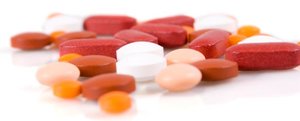
Two types of gelatin are commonly used as a binder in tablets:
- non-gelling
- Gelling
Gelling gelatinis used after granulationof the powderin compression. It has a higher gel strength that gives cohesiveness, resistance and hardness to the tablets. The high gel strength also means it has a longer disintegration rate.
Non-gelling gelatin is used in direct compression. It has lower binding power which makes the tablets weaker. However, it has a fast disintegration rate meaning the patient can benefit from the effects of the medicine a lot sooner.
Blood plasma substitutes
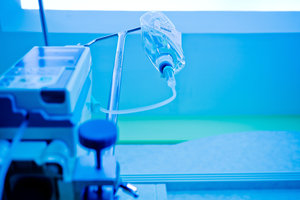
Hydrolyzed gelatin is an important component of plasma substitutes, a class of parenteral formulation known as volume expander. When highly purified with low endotoxin level, it can be used to temporarily expand blood volume during medical emergencies.
It is the ideal ingredient:
- Highly biocompatible
- Viscosity and molecular behavior are very similar to blood plasma.
- Short retention time (especially when compared to starch alternatives).
- Doesn’t accumulate in the body and is biodegradable.
- Remains stable throughout the lifecycle of the product.
The hydrolyzed gelatin used in plasma substitutes requires special modification. There are two main types of modified gelatin used in plasma substitutes:
- Succinylated gelatin. This is the most common type. It has an improved body compatibility
- Urea-linked gelatin. Modified by cross-linking polypeptides. Has a slower diffusion rate
Vaccines
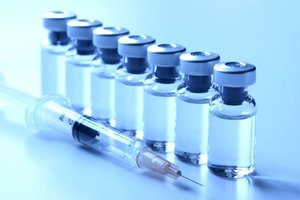
A specially purified gelatin, with low endotoxin levels, is used as a stabilizer in some vaccines. It provides the following benefits:
- Helps to keep lyophilized (freeze-dried) products stable
- Reduces the potential for side effects
- Ensures patient safety
How gelatin is used in medical devices
Gelatin-based hemostats
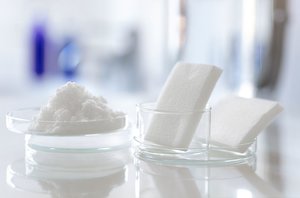
Gelatin is a widely available hemostatic agent used by surgeons to minimize blood loss during surgery. Gelatin-based hemostats are typically made from gelatin derived from porcine collagen (pork skin), and come in the form of sponges, strips, powder or nanofibers.
Gelatin-based hemostats can absorb more than forty times their own weight making them ideal for creating an artificial blood clot and stemming blood flow. When combined with thrombin, gelatin-based hemostats can also help in the formation of blood clots.
Because gelatin is highly biocompatible, gelatin sponges can be left in the body and will naturally dissolve. Some of these in vivo applications require specific dissolution rates, so the gelatin sponges can be specially configured to suit individual needs.
Femoral plugs

Femoral plugs are a device used in hip replacements. Purified gelatin can be used in femoral plugs with plasticizer for a more elastic shape. They’re used to facilitate the change of prothesis. They also protect the tissues from exothermic reactions when the plaster sets. High biocompatibility, low immunogenicity and high biodegradability means it is absorbed by the body.
How gelatin is used in regenerative medicine

Regenerative medicine is a combination of molecular biology and tissue engineering. The aim is to use the patient’s own cells to repair and regenerate diseased or injured tissue.
In this field, gelatin is a useful biomaterial that mimics the extracellular matrix and facilitates cell growth. It also helps improve cell viability. The gelatin used in regenerative medicine has to be highly purified to ensure minimal presence of endotoxins and pyrogens. This ensures maximal performance and patient safety.
What is pharma-medical grade gelatin?
Gelatin is a soluble protein obtained by the partial hydrolysis of collagen derived from the bones, hides and skins of animals (mainly from cows, pigs and fishes). To extract gelatin, the native collagen is rendered soluble via acid, alkaline or enzymatic treatment and then boiled in water.
For gelatin to be considered pharma-medical grade, it needs to meet certain standards:
Quality Control and Traceability
Testing, control and full traceability are important: careful selection of raw materials and suppliers, swift collection and transport, and strict testing and control of raw materials to ensure optimal quality and safety.
Technical specifications
Gelatin has to meet the specifications described within the pharmacopeia:
- gel strength range
- pH range
- conductivity
- loss on drying
- zinc content
- chromium content
- microbiological limits
GMP Compliant
Gelatin needs to be produced in alignment with good manufacturing practices (GMP) suitable for its intended application (e.g. excipient, raw material for medical devices, tissue engineering etc). The process is audited by pharmaceutical companies.
We’ll help you to keep in step with regulations and guidelines across the world.
Special Adaptations
Raw materials for medical devices and other specific applications (parenteral, regenerative medicine, cell culture, etc.) may have additional requirements depending on the final application, such as additional virus inactivation studies, free of endotoxins / pyrogens and free of mycoplasma.
Reasons why gelatin is used
Gelatin is a polydisperse polymer that has a unique set of functionalities and properties that make it suitable for a wide range of applications.
The Main Properties of Gelatin:
Thermo-reversible
Gelling grade gelatin is thermoreversible, meaning it has a reversible melting and setting ability at a temperature between 25°C and 32°C (gelatin solution at 10%). The exact transition temperature depends on the type and concentration of gelatin used, making it a versatile material that can be used in different applications that require different melting temperatures.
Bloom (Gel-strength)
The bloom value of gelling grade gelatin determines the firmness of the gelled products. A hydrolyzed gelatin has no gel forming capability so it has a bloom value of 0.
Biocompatibility
As a natural protein, gelatin offer high biocompatibility and is well-tolerated by the human body.
Body Temperature Melting-point
Gelatin melts at body temperature making it perfect for pharma-medical applications that require metabolization.
Other reasons
Clean Label Friendly
The world is currently seeing a bigger demand for products made with safe materials from natural origin. There’s also a wider push to take patient safety to the next level. Gelatin satisfies those demands.
Natural Origin (VIII)
Gelatin is a naturally occurring protein extracted from animal collagen.
Safe
Gelatin is considered non-allergenic (except in rare cases of meat allergy). It is also Generally Recognized As Safe (GRAS) by the FDA.
Quality Control
Gelatin is a stable and safe excipient with excellent physical and chemical properties. The pharmaceutical gelatin production process adheres to stringent national and international pharmaceutical processing requirements.
With a history going back nearly two centuries, gelatin has played a really important role in pharmaceutical and medical evolution. Think of all the lives that were and continue to be saved thanks to plasma substitutes and hemostats. Today we take these medical devices for granted. But at some point, they had to be invented and improved - gelatin made that possible.
Inevitably, when we look to the future, we see that gelatin will continue to be an important part of medical innovation. Medical technologies that once only existed in the imagination of science fiction writers are now becoming reality. The future holds many exciting developments, particularly in the field of regenerative medicine where scientists are learning how to grow cells and repair bodily organs. And who knows, one day gelatin will play a role on growing new organs from your own DNA.
Customize your a pharmaceutical grade gelatin to your exact specification: Click here to contact our team today.
Whatever the future holds, we can be certain that gelatin will play its part.
If you would like more info on the science of gelatin, check out these resources
References:
(I) Pharmaceutical Capsules (2nd ed., p.2)
(II) Modern Pharmaceutics (4th ed. p.513)
(III) Pharmaceutical Capsules (2nd ed., p.11)
(IV) Traveling Through Time: A Guide to Michigan's Historical Markers (p.483)
(V) https://jamanetwork.com/journals/jama/article-abstract/440081
(VI) https://onlinelibrary.wiley.com/doi/pdf/10.1111/j.1365-2044.1987.tb05376.x
(VII) https://www.ncbi.nlm.nih.gov/pmc/articles/PMC2978438/
(VIII) Gelatin is considered as a natural ingredient in accordance with the ISO technical specification on definitions and technical criteria (ISO/TS 19657:2017). "
